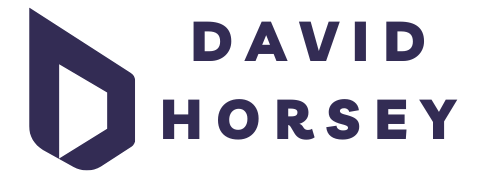Table of Contents
ToggleIn a world where data is king, the quest for the ultimate machine learning optimization platform has never been more critical. Picture this: your algorithms are like a car stuck in traffic, and you’re just itching to hit the gas. Enter the ML optimization platform—the turbocharger that transforms sluggish models into high-performance machines.
Overview of ML Optimization Platforms
ML optimization platforms play a crucial role in refining machine learning models. These tools enhance performance and efficiency, allowing for faster analysis and better decision-making. By streamlining processes, they reduce computational costs and time spent on training models.
Platforms typically utilize various techniques such as hyperparameter tuning, model selection, and feature engineering. Hyperparameter tuning adjusts parameters of algorithms to achieve optimal performance, while model selection determines the best-suited algorithm for a given dataset. Feature engineering focuses on transforming raw data into meaningful inputs that improve model accuracy.
Popular ML optimization platforms include Google Cloud AI Platform, Amazon SageMaker, and Azure Machine Learning. Each of these platforms offers unique features that cater to different needs within the machine learning workflow. Google Cloud AI Platform excels in automatic tuning capabilities, while Amazon SageMaker integrates well with other AWS services. Azure Machine Learning stands out for its user-friendly interface and robust deployment options.
ML optimization platforms also support collaborative environments. Teams can work together on projects, sharing insights and improving efficiency. Collaboration features enable version control and code sharing, streamlining project management.
Choosing the right ML optimization platform involves assessing organizational needs and available resources. Factors such as scalability, ease of use, and integration with existing infrastructure matter greatly. Understanding specific requirements can lead to better model performance and increased productivity.
Key Features of ML Optimization Platforms
ML optimization platforms offer essential features that enhance the performance and usability of machine learning models. Their design focuses on addressing the unique challenges faced in machine learning workflows.
Scalability
Scalability allows organizations to expand their computational resources as project demands increase. Users can seamlessly scale up or down with cloud-based infrastructure, optimizing both cost and efficiency. This flexibility accommodates larger datasets and complex algorithms without performance degradation. Businesses benefit from processing power tailored to their specific needs. Platforms like Amazon SageMaker and Google Cloud AI Platform exemplify scalability, effectively supporting growing enterprises.
User-Friendly Interface
A user-friendly interface simplifies the machine learning process for teams at all skill levels. Intuitive dashboards and visual tools make navigation straightforward, fostering quick learning and reduced onboarding time. Customizable workflows enable teams to create personalized environments, enhancing productivity. Effective visualization of model performance and metrics aids in immediate decision-making. For instance, Azure Machine Learning provides an organized and accessible interface, streamlining user experience.
Integration Capabilities
Integration capabilities allow seamless connections with existing tools and platforms in a machine learning environment. Compatibility with popular programming languages and data management systems eliminates barriers to effective usage. This connectivity ensures a smooth workflow, facilitating data transfer and model deployment. Users appreciate the ability to consolidate their workflows within a single interface. Efficient integration enhances collaboration and data sharing, proven by platforms like Google Cloud AI that simplify data sourcing through APIs.
Popular ML Optimization Platforms
Numerous machine learning optimization platforms enhance algorithm performance. Each platform offers distinct features to address specific organizational needs.
Google Cloud AI Platform
Google Cloud AI Platform provides a comprehensive suite for building and deploying ML models. Users appreciate integration with various Google services, including BigQuery and TensorFlow. The platform excels in hyperparameter tuning, allowing for efficient model refinement. Scalability is a significant benefit; projects can grow as needed without disruption. Additionally, advanced analytics tools enable in-depth analysis of model performance. Teams often find the user-friendly interface simplifies the workflow, enhancing collaboration among members with varying skill levels.
Amazon SageMaker
Amazon SageMaker offers an end-to-end solution for developing machine learning models. A standout feature includes built-in algorithms, which save time and resources for users. The platform supports automatic model tuning, streamlining the hyperparameter optimization process. Collaboration features allow teams to share code and insights seamlessly. Security measures protect data throughout the modeling process, addressing privacy concerns. Users can integrate with other Amazon Web Services, enhancing the platform’s functionality and ease of use.
Azure Machine Learning
Azure Machine Learning stands out with its robust set of tools for model creation and deployment. Users value the automated machine learning capabilities that simplify the model selection process. Collaboration is key; the platform allows teams to work together effectively, improving productivity. Scalability ensures organizations can adapt to varying project demands. As a cloud-based solution, it integrates easily with existing Microsoft services and tools. Enhanced governance features enable teams to manage models and data securely throughout the lifecycle.
Benefits of Using ML Optimization Platforms
ML optimization platforms enhance algorithm performance, making them indispensable in today’s data-driven landscape. These tools significantly speed up the training process, enabling quicker model refinement and faster results.
Incorporating hyperparameter tuning boosts accuracy by adjusting the crucial parameters of algorithms. This capability ensures models reach their highest potential performance. Selecting the right model is easier with built-in model selection features, which identify the most suitable algorithms for specific datasets.
Feature engineering transforms raw data into valuable insights, improving overall model accuracy. Organizations notice substantial improvements in decision-making with more precise outputs.
Scalability presents another advantage, allowing teams to adapt computational resources based on project demands. Increased resources accommodate larger datasets or more complex algorithms seamlessly. User-friendly interfaces simplify machine learning tasks, making access easier for individuals with varying skill levels.
Collaboration benefits immensely from these platforms, promoting teamwork and data sharing among users. Features like version control streamline project management and foster an environment of collective learning.
Integration capabilities connect with various tools in existing workflows, making transitions smooth and efficient. For instance, Google Cloud AI Platform facilitates connections with other Google services, while Amazon SageMaker offers built-in algorithms that align effortlessly with project requirements.
Enhanced security measures protect sensitive data and ensure compliance, addressing growing concerns about data privacy. Organizations leverage these features to maintain integrity and safety across their machine learning endeavors.
Overall, ML optimization platforms deliver substantial advantages that improve efficiency, accuracy, and collaboration, providing organizations with the edge they need in the competitive landscape.
Challenges in Implementing ML Optimization
Implementing ML optimization platforms presents various challenges for organizations seeking enhanced algorithm performance. Limited expertise often hampers teams, as many lack the necessary skills in machine learning and optimization techniques. This knowledge gap can lead to suboptimal utilization of available tools.
Data quality also poses significant hurdles. Inconsistent or incomplete data can negatively impact model accuracy and the overall effectiveness of optimization efforts. Observing this issue affects decision-making based on insights derived from these models.
Integration with existing systems remains another challenge. Many organizations rely on a mix of tools and platforms, which can complicate the seamless adoption of new ML optimization solutions. The resulting compatibility issues can hinder collaborative efforts.
Scalability represents a further concern. Organizations may struggle to adjust computational resources in response to project demands. Anticipating resource allocation and costs requires careful planning, which can be daunting.
Finally, ensuring security and compliance with regulations adds layers of complexity. Organizations must prioritize protecting sensitive data while also navigating legal requirements. Failing to manage these risks can expose them to potential breaches and penalties.
Addressing these challenges requires a strategic approach. Identifying skill gaps within teams, investing in training, and establishing clear data governance practices become essential steps. Prioritizing integration strategies with existing workflows leads to smoother transitions. By focusing on these areas, organizations can maximize the benefits of ML optimization platforms and improve overall efficiency.
ML optimization platforms are transforming the way organizations approach machine learning. By enhancing model performance and streamlining workflows they empower teams to make data-driven decisions more effectively. The integration of advanced techniques like hyperparameter tuning and feature engineering not only boosts accuracy but also accelerates the training process.
As organizations navigate challenges such as data quality and integration complexities they can harness the capabilities of these platforms to gain a competitive edge. Choosing the right solution tailored to specific needs ensures that teams can leverage the full potential of machine learning. Embracing these tools ultimately leads to improved efficiency collaboration and better outcomes in the ever-evolving data landscape.







